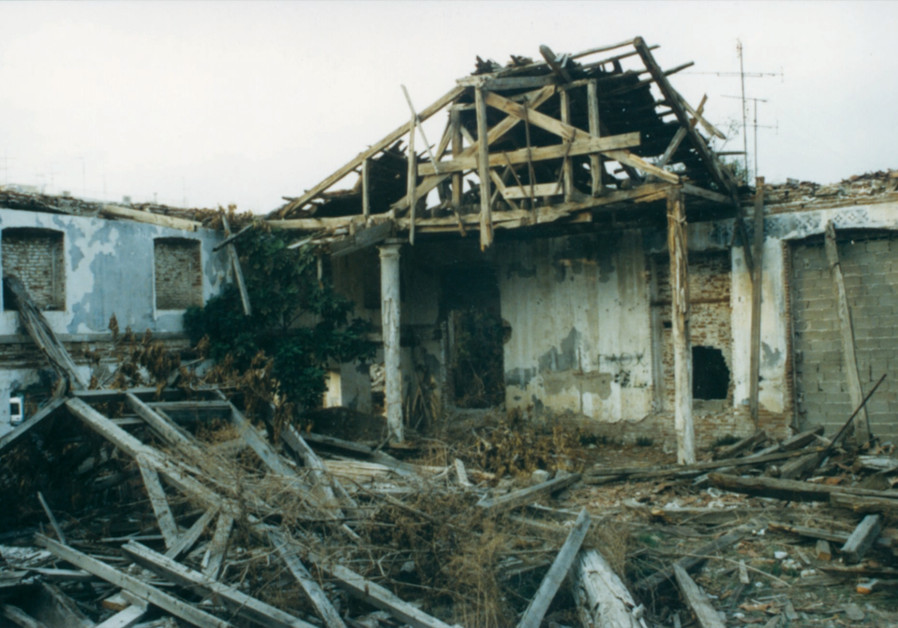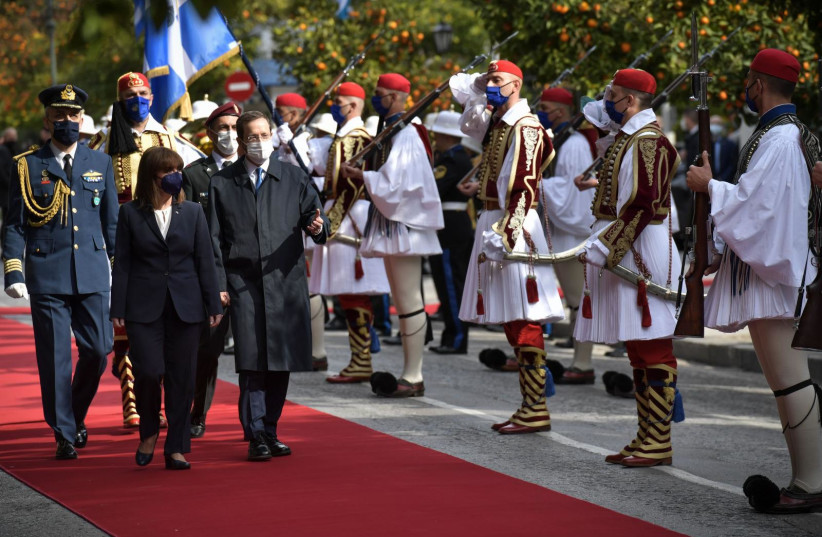
Something is changing in Greece. The Jewish heritage sites once abandoned or demolished or serving other uses, are now slated for reconstruction and reuse as synagogues, nearly 80 years after the Holocaust.
Jewish communities – the Greek-speaking Romaniotes – were established in Greece in antiquity, in cities such as Ioannina and Halkis. Sephardic communities were established after 1492, in important Jewish centers such as Salonika (Thessaloniki), and throughout Greece – from Corfu to Rhodes and from Didimoticho to Crete.
In the Holocaust, 87% of the Jewish community in Greece perished. The destruction took a heavy toll in Jewish heritage as well. Synagogues, libraries, community buildings, Jewish schools, and Jewish clubs were either demolished or taken over by other organizations. Important synagogues in Salonika were demolished, while in November 1943, the ancient Jewish cemetery of the city, with valuable marble tombstones, was turned into construction material. Some tombstones can still be found today in private courtyards.
In the mid-1940s, Kanaris Konstantinis, employee of the Hellenic Post and a representative of the newly established Central Board of Jewish Communities, traveled throughout Greece and documented in detail the state of the Jewish communities in the early years of reconstruction after the Holocaust.
In the 1980s, Nicholas Stavroulakis the former director of the Jewish Museum of Greece, along with photographer Timothy deVinney, undertook the first survey of Jewish sites in Greece, and documented through photography the synagogues and Jewish sites, a few since lost.

In 1993, shortly after graduating from the Yale School of Architecture, and following architectural practice for two years in New York, I undertook the next step of documentation. Inspired by the work of my predecessors, and understanding the need to document the small number of synagogues that survived the destruction of the Shoah, I undertook the first ever architectural survey and study of the synagogues of Greece.
The survey project – once a private endeavor – has turned today into a very important historic resource. It is described very vividly in the new book that this writer presented throughout Greece and at the Greek Community Center in Jerusalem in April 2022. Titled The Synagogue by Infognomon Editions in Greece, it is my third book on the subject.
AS OPPOSED to my previous books, it does not only present the historic and architectural background of the synagogues, it also describes the experience of traveling from city to city, and the effort to preserve the Jewish memory, through surveys, interviews and meetings with locals and Jews, some of whom have since passed away. Also included are the actual surveys of the synagogues, some of which have since been demolished.
For many years, the survey project remained in folders and computer discs, disseminated in books, articles, exhibitions and lectures around the world. However, there was no actual use in sight.
This changed in 2014, when the Jewish Community of Thessaloniki, decided to renovate its two remaining synagogues – Monastirioton (built in 1926) and Yad Lezikaron (built in 1984). The community president David Saltiel turned to my team with associates KARD Architects – Dimitris Raidis and Alexandros Kouloukouris – based in Thessaloniki. The renovation aimed to restore the historic importance of the monuments, and included restoration of the interiors and exteriors, new furnishings, upgrade of systems and improvement of accessibility.
The reinstallation of the Ten Commandments in marble at the top of the arch of the front facade was a renovation highlight, thanks to earlier research on historic synagogues. In Yad Lezikaron the highlight was restoring the historic heichal dating from 1921 and belonging originally to the Sarfati synagogue demolished after WWII, again based on earlier research.
In 2017, in Trikala, a city in Central Greece, dampness issues from rising underground waters due to Climate Change, required immediate solutions to protect the historic synagogue Yavanim built in the 19th century. The Jewish Community President Yakov Venouziou, with the support of the Jewish Community of Thessaloniki, turned again to my team, this time with associate architects Petros Koufopoulos and Marina Mariantheos based in Athens, to also restore the historic synagogue.
The team solved the dampness issues, and restored the historic interior and the two bimot – a unique example where two traditions survive side by side inside the same synagogue: the Romaniote bimah against the western wall, and the Sephardi bimah in the center of the prayer hall. Moreover, the team demolished the three stores that blocked the synagogue’s view from the street since after WWII, thanks to earlier research and documentation of the historic relationship of the synagogue to the street.
In 2019, I collaborated with Yvette Nahmia-Messinas and the Eforate of Antiquity of Piraeus and Islands toward a unique project to preserve and protect the mosaic floor that belonged to an ancient synagogue of the 4th century CE still standing in the courtyard of the Archaeological Museum of Aegina. The mosaic was discovered in 1829, and studied by several archaeologists including Elazar Sukenik in 1928.
The collaboration with the Eforate led to an exhibition on the mosaic and a campaign which successfully secured the commitment of the Ministry of Culture to restore the mosaic and of the Jewish businessman, owner of music company Minos-EMI, Samuel-Makis Matsas, to donate the design and construction of the protective roof over it. The bureaucratic process is under way and the work is expected to conclude in 2023.
RECENTLY, UNEXPECTED news reached me from the northern Greek city of Komotini, where the mayor Yiannis Garanis declared in public on March 9 that he is determined to “rebuild the demolished historic synagogue Beth El in Komotini.” This, Garanis said, would be made possible “thanks to drawings made by architect Elias Messinas,” referring to my survey completed in 1993, just before the synagogue was demolished.
The mayor, with whom I met on April 13, is currently in the process of requesting the necessary approvals, especially from the Greek Archaeological Service, as the synagogue once stood adjacent to the Byzantine walls, with the Jewish quarter located inside the walls.
Finally, in the last year, another unexpected phone call brought another surprise. This time from the eastern island of Kos, northwest of Rhodes. In Kos, the synagogue was built circa 1936 during Italian rule, after the older synagogue was destroyed in the earthquake of April 1933. Following the deportation of the Jewish Community in 1944, the synagogue stood abandoned and later purchased by the municipality to serve as a cultural center for the island. Up until now, the closest functioning synagogue was the 16th century Shalom synagogue in nearby Rhodes in the Jewish quarter of the old city, which attracted many Israeli and Jewish visitors. Lately, as more Israeli tourists choose Kos as their vacation destination, a need for a functioning synagogue was raised.
The municipality, in collaboration with the Central Board of Jewish Communities of Greece and with the assistance of my architectural team and a local engineer, is weighing, the possibility of adapting the interior of the synagogue also to the needs of a Jewish prayer hall, with all the necessary furnishings, seating and decoration. I had the opportunity to discuss the issue locally when I visited on April 11 for a presentation of my new book The Synagogue where I also presented a sketch of the interior design of the synagogue, based on research at the Nahon Museum of Italian Jewish Art in Jerusalem and the municipal Italian archive in Kos.
The writer is an architect and urban planner, researcher of the history and architecture of Greek synagogues since 1993. He authored the books The Synagogue (Infognomon, 2022), The Synagogues of Greece (Bloch, 2011) and The Synagogues of Salonika and Veroia (Gavrielides, 1997).







